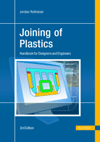Volvo Truck is also leading the lightweight charge in the Class 8 sector of the commercial vehicle industry. Engineers are using a wide variety of materials, including aluminum and composites, to trim weight off of cabs, chassis, drivetrains and other components.
For example, the company uses plastic brackets made from polybutylene terephthalate resin for the side air deflection system on all seven models in its VN platform. Lightweight plastic is also used for the fenders, the grille and forward lighting.
ASSEMBLY recently asked Frank Bio, Volvo Trucks product manager, how his company is attempting to reduce the weight of its vehicles.
ASSEMBLY:How is Volvo Trucks tackling the lightweighting challenge?
Bio: We’re constantly evaluating the latest material options and looking for new ways to integrate lightweight components that are strong and cost-effective.
ASSEMBLY: Are your engineers focusing more attention on any particular part of the vehicle?
Bio: All areas of the truck are in constant focus. But, the most frequent changes are made to the chassis and cab interiors, so those areas tend to benefit most often from new materials.
ASSEMBLY: How much weight have you reduced in your vehicles over the last 10 years?
Bio: Weight savings vary based on model and spec, but we do offer options that provide a return on the investment. For example, bulk haulers are very interested in our aluminum fifth wheel option and our combination of aluminum wheels and low-profile tires. For bulk haulers, these lighter components translate into the ability to haul a greater payload while still adhering to weight regulations.
ASSEMBLY: What types of lightweight materials are you incorporating into your vehicles?
Bio: Volvo began using high-strength steel (HSS) in its cabs with the introduction of the VN model in 1996. It offers very good strength-to-weight properties. We’re also utilizing lightweight resin-based materials for our aerodynamic fairings.
ASSEMBLY: What issues still need to be addressed before there is more widespread use of lightweight materials for heavy-duty truck applications?
Bio: Cost is a very significant issue, because heavy-duty truck manufacturers are competing in an incredibly cost-sensitive market. Materials must strike the right balance between cost and weight while still retaining vital safety qualities.






